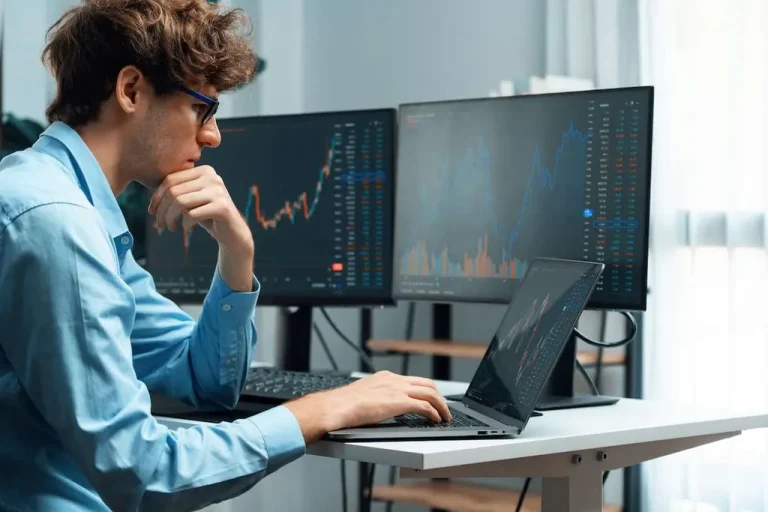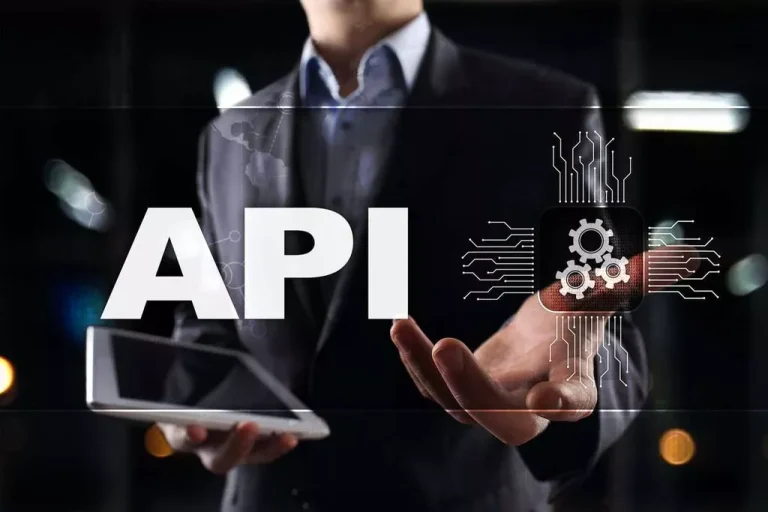What is the Metaverse? Meaning & Examples
Content
Ultimately, this will help metaverse users define the shape of the metaverse, giving more substance to the digital universe through verifiable digital items and helping users feel substance in an intangible, digitized space. Simply put, the metaverse is a parallel digital universe that exists alongside the real world. In more realistic renderings, metaverse visitors use complex motion-tracking machinery and virtual reality headsets to physically interact in a virtual world, where they take the form of virtual avatars, play games, and live pseudo-anonymous lives. Sometimes, the current existence of user-owned digital goods that have traditionally real-world qualities of rarity, value, and history is referred to as evidence that the metaverse is already with us. Some argue that the metaverse exists in the human interactions, feelings, and experiences that make up Proof of work the digital lives we live on individual social platforms, video games, and more.Yet despite these disparate visions, the core concept behind the metaverse is clear. Telepresence—defined as an immersive state that allows a person to feel present in a virtual space—is key to facilitating metaverse experiences.

Metaverse Definition by Dmitry Ulyanov CEO of in3D
Sensorium focuses its definition of the metaverse on specialized decentralization. They note that the metaverse allows people to come together around a central vision. People can build up their own metaverses around future of the metaverse specific interests and opportunities. Sensorium’s metaverse meaning puts a heavy emphasis on the decentralized nature of the metaverse as a whole. They note that we’ll see countless virtual spaces that sit within the larger scope of the metaverse in the future. Sensorium anticipates that “Each will have their own economies, communities, infrastructures and areas of interest”.

Meta and Spotify CEOs Criticize European Union Regulations on Open-Source AI
One of the https://www.xcritical.com/ pioneering digital spaces that tried to reach the metaverse level was VR-powered video games. Nowadays, top metaverse platforms have gone much further and now combine several technologies, among them include VR, AR, AI, IoT, 3D modeling, blockchain, brain-computer interfaces, etc. Niantic is a software developer best known for the augmented reality mobile games Ingress and Pokémon Go. The paradox of defining the metaverse is that in order for it to be the future, you have to define away the present.
What Does the Metaverse Mean for Facebook?

DTTL and each of its member firms are legally separate and independent entities. Please see About Deloitte to learn more about our global network of member firms. The metaverse is a tool that can elevate the good you’re already doing. Building a responsible metaverse will help people trust it and use it, whether that’s consumers or colleagues. We need to understand the whole working journey to know where it makes sense for the metaverse to fit.
The metaverse will include familiar 2D experiences, as well as ones projected into the physical world and fully immersive 3D ones too. Advocates from niche startups to tech giants have argued that this lack of coherence is because the metaverse is still being built, and it’s too new to define what it means. The internet existed in the 1970s, for example, but not every idea of what that would eventually look like was true. The internet is a network of billions of computers, millions of servers and other electronic devices.
For example, players can’t take their rare World of Warcraft sword, sell it, and then buy a house on Second Life, and activities are restricted by centralized platform owners. Twitter is separate from Instagram; while there are social avenues to connect them, there is no formal transfer of information or value between the two as they are built by separate companies. Instead, these experiences exist in limited silos that represent a meta-room more than a complete metaverse. The Metaverse is an alternative digital space that simulates or expands the real world through the latest technologies of virtual reality, augmented reality, etc. However, it’s not the only metaverse definition, and not the most accurate one either.
Meta, formerly known as Facebook, defines the Metaverse as “a set of virtual spaces where you can create and explore with other people who aren’t in the same physical space as you.” Let’s examine this definition further. Lastly, when Microsoft decided to buy game developer Activision Blizzard for $68.7 billion in early 2022, it cited the Metaverse as one of its core reasons for the acquisition. Microsoft went on to note that the deal would provide the necessary “building blocks for the Metaverse.” Activision Blizzard is well-known for developing massively multiplayer online role-playing games (MMORPGs) such as Diablo and World of Warcraft. These platforms provide the necessary ammunition for the argument that the Metaverse, in its most rudimentary form, already exists. It can be argued that these games and platforms represent the earliest iterations of what will eventually be known as the Metaverse.
- However, interactive and immersive experiences are just a piece of the puzzle; the metaverse will require a value layer underpinned by decentralized infrastructure such as blockchains to empower users as much as platform developers in building up the metaverse.
- Meta itself lost $13.7 billion in 2022, and then spent the first half of 2023 laying off over 10,000 employees.
- Multinational networking and telecommunications company Ericsson uses Omniverse to simulate 5G wave propagation in real time, minimizing multi-path interference in dense city environments.
- “Just like in the infancy of the internet, no one can predict exactly how and how large the metaverse will grow — but today, we know we can lay the foundations,” he said.
- Since then, multiplayer games, such as Fortnite, Minecraft, and Roblox, have provided a virtual environment where players can interact with each other in the form of avatars – creating the foundation of the metaverse.
The industrial metaverse will link digital twins into a wider virtual environment that encompasses machines, factories, products and supply chains. Within that access role, VR can support a variety of metaverse use cases. For example, VR can combine with the allied field of digital twin technology, which lets organizations create virtual representations of physical devices, machines or processes. Technologists can use the VR extension of a digital twin to simulate various issues, according to Johna Till Johnson, CEO and founder of Nemertes Research.
You’ve seen how different organizations have different metaverse meanings. Decentralized autonomous organizations, or DAOs, are one of the most important examples of this phenomenon. DAOs are groups whose behavior is guided by rules inherent to the metaverse blockchain. Click here to read the full metaverse meaning explained by Adam Frisby of Sine Wave Entertainment.
The New York Post sees the metaverse as a shared digital world that can often substitute itself for the physical one. They note that “The idea of the metaverse is that it will create new online spaces in which people’s interactions can be more multi-dimensional, where users can immerse themselves in digital content rather than simply viewing it”. You can already see some aspects of the metaverse in existing virtual video game worlds. Games like Second Life and Fortnite or work socialization tools like Gather.town bring together multiple elements of our lives into online worlds.
Even today, user creation and ownership of valuable items and currencies help develop a single, united metaverse. All these features provide blockchain the potential to power this future technology. This article explains the concept in detail, its features, and why it is so important. Many companies that have hopped on board the metaverse bandwagon also envision some sort of new digital economy, where users can create, buy, and sell goods.
People shall be able to navigate the limitless world with the aid of this holistic experience that will combine all of these disparate encounters. Humans communicate and interact in the Metaverse through avatars and visual representations of a user. Users can engage and converse both with the Metaverse and with other users. The setting for these exchanges is cyberspace, which serves as a representation of the real world. On the Metaverse, land can be purchased by anybody for cryptocurrencies. The land is a non-fungible token (NFT), a blockchain asset class that one cannot trade for other things.
It’s time to define this nebulous and complicated term, though, as the Metaverse is predicted to grow to be an $800 billion market by 2024. Tech titans like Facebook, Microsoft, Apple, and Google are investing heavily in making it a reality. Deloitte LLP is the United Kingdom affiliate of Deloitte NSE LLP, a member firm of Deloitte Touche Tohmatsu Limited, a UK private company limited by guarantee (“DTTL”).
To celebrate its 200th anniversary, Louis Vuitton launched “Louis the Game”, a game in which you had to find hidden NFTs. In 2018, Steven Spielberg released in theaters “Ready Player one”, where the hero Wade Watts plunges into the parallel digital world “Oasis”, thanks to a digital headset. Computer makers worldwide are building NVIDIA-Certified workstations and laptops, which all have been validated for running GPU-accelerated workloads with optimum performance, reliability and scale. It’s designed entirely in digital and simulated from beginning to end in Omniverse. Those robots will come in all sizes and shapes — box movers, pick-and-place arms, forklifts, cars, trucks and even buildings.